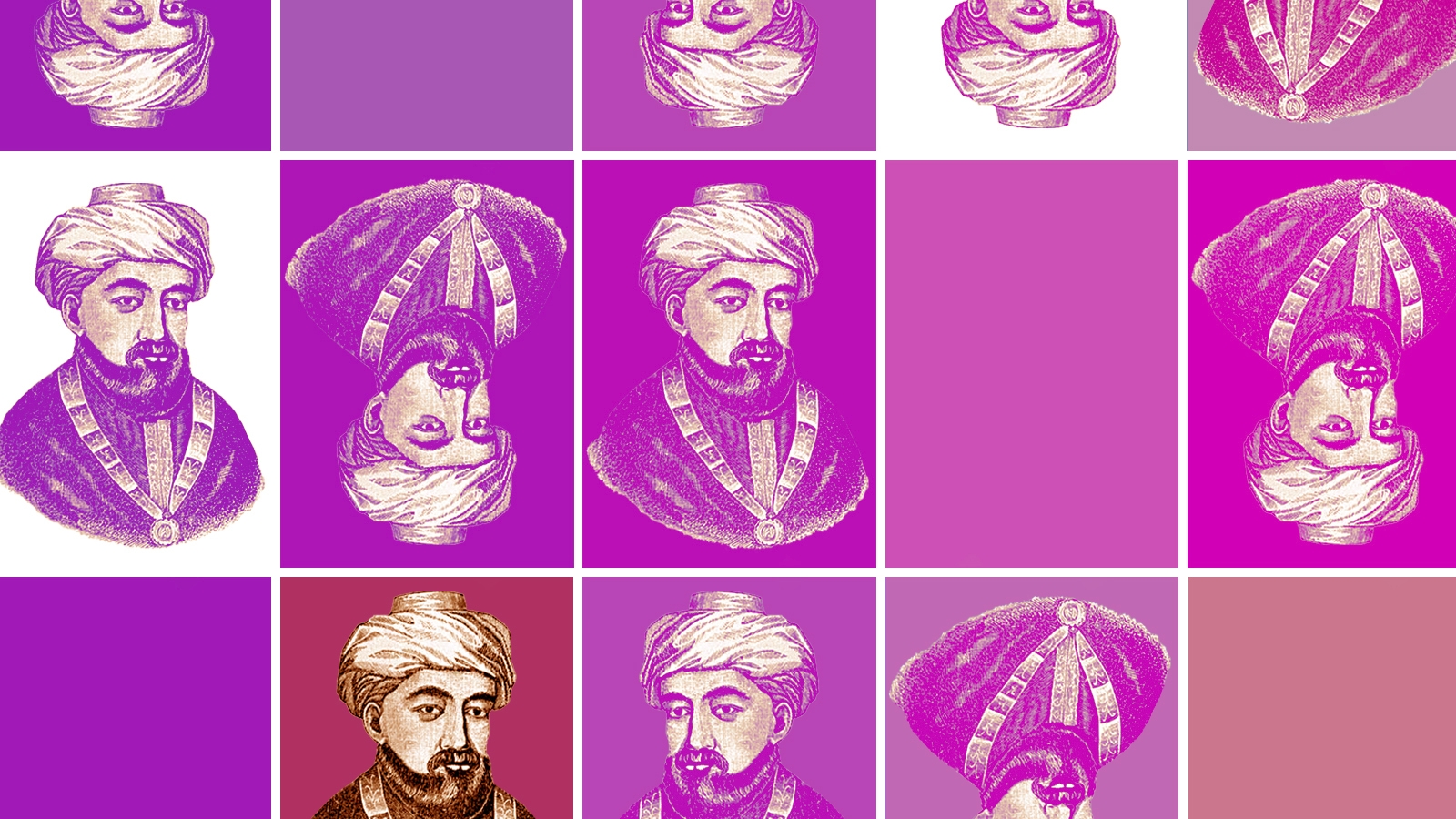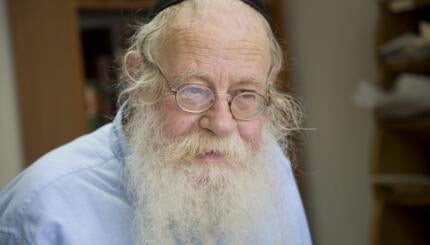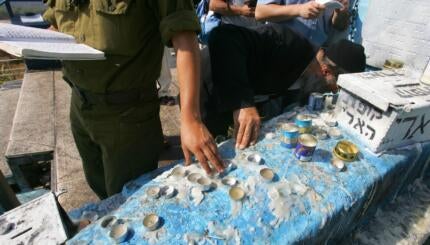Maimonides is, and has been for centuries, a figure of extraordinary authority. Yet in his day, his formulation of Judaism was highly contested. In the decades following his death, his ideas in fact appeared sufficiently controversial that some authorities made efforts to ban his works entirely. Even today, Maimonides’ conviction that science and philosophy lie at the bedrock of Jewish tradition has few followers.
Maimonides maintained that the Bible contains an external as well as an internal layer. At the text’s surface is its literal meaning; hidden below lies the text’s allegorical meaning. Citing Proverbs, Maimonides describes the sacred text as an “apple of gold encased in silver filigree.” Only through the silver filigree of the literal meaning can the internal meaning be glimpsed. Yet, it is the internal meaning that is as valuable as gold.
The accessibility of such a hidden layer of Jewish tradition was a matter of dispute. Prominent scholars in Maimonides’ time and later would claim that such hidden teachings were now beyond reach. But the actual content of this internal layer was contested as well. Some would claim that this hidden meaning was contained in Jewish mystical teachings. Maimonides maintained that the inner meaning of Jewish tradition was a version of physics and metaphysics. In Maimonides’ view, this hidden inner meaning could be recovered through a specific type of non-literal interpretation called allegory.
Maimonides elucidated these ideas in his philosophical masterwork The Guide to the Perplexed, completed in 1190. In the Guide, Maimonides produced a breathtaking synthesis of philosophy and Judaism while offering a sweeping and sophisticated reinterpretation of Jewish tradition. In the years after his death in 1204, the Guide would be criticized harshly, both for the specific claims it made and for its larger project to reconcile Judaism and philosophy. Some scholars attempted to ban the work outright.
With your help, My Jewish Learning can provide endless opportunities for learning, connection and discovery.
The Hebrew Bible and traditional Judaism describe an active God — one who answers prayers, cures infertility, helps the Israelites in battle, splits the sea, and much else. In the Guide, Maimonides does his utmost to diminish this sort of divine action. He does this because his God is above “responding” to anything earthly or human. Indeed, God’s absolute perfection precludes such a response. Maimonides’ interpretation of Judaism therefore holds miracles to a minimum and maintains that the prophets’ experience of God was achieved through a finely developed human capacity, not through divine intervention. Maimonides teaches that the true worship of God, and a close connection with God in this life and the next, are achieved through philosophic comprehension.
Sign up here for “There Was None Like Maimonides,” My Jewish Learning’s email series about this legendary Jewish thinker.
In the 1230s, some traditionalists became convinced that Maimonides’ understanding of Judaism lay well beyond any possible authentic reading of the ancient sources. But their particular reactions to Maimonides’ writings differed depending on their degree of familiarity with philosophical concerns and modes of discourse. In the Castille region of Spain, where Maimonides was at times well understood, figures like Judah Alfakhar of Toledo condemned him outright. Alfakhar claimed, for example, that Maimonides’ attempt to diminish the possibility of miracles was unfaithful to the tradition, which was full of miracles at every turn.
In Languedoc — today a region of southern France but in the 13th century a region with its own identity — many Jewish scholars were entranced by Maimonides but still struggled to understand him. Some, like David Kimhi of Narbonne, rose to Maimonides’ defense. While others, like Solomon ben Abraham of Montpellier, were likely overwhelmed by Maimonides’ use of philosophic language and concepts. Solomon was incensed by the Guide as well as by Sefer ha-Mada, the first volume of Maimonides’ Mishneh Torah, and he sent two students north to France to persuade the Jewish authorities there to condemn Maimonides.
The scholars in France, though highly respected for their study of Talmud, were unlikely even to have heard of Maimonides. And they had no reason to concede that God does not possess a body, as Maimonides insists, given that the Torah and the ancient rabbis certainly made it seem as if God does. The French scholars were thus an easy target: Maimonides’ works were banned by them in every Jewish community, worldwide and forever.
The controversy was ultimately quieted by the great Catalonian scholar Nahmanides. As a kabbalist, Nahmanides did not share Maimonides’ interpretation of Judaism, nor did he see philosophic inquiry as the key to a deep understanding of ancient Jewish sources. But neither did he believe that the appropriate response was to prohibit his writings. Nahmanides asked the scholars in France to withdraw their order of excommunication, but to retain a prohibition on the study of the Guide in groups, a compromise proposal that effectively defused the conflict.
The struggle over Maimonides’s legacy would not end with the failure to have his works excluded from the canon, but no scholar would again act to remove them entirely. Rather, they would try to circumscribe Maimonidean teaching.
This is what unfolded nearly a century later in Languedoc. By then, Jewish philosophic culture had become well entrenched, traveling far beyond an early circle of elite translators to become the shared religious discourse of the community. This became a matter of concern to Abba Mari ben Moses of Montpellier, a local scholar who believed that Maimonides had conclusively settled the philosophical dilemmas of Judaism. Public discourse concerning philosophic matters therefore could only breed confusion and perhaps even heresy.
Abba Mari sought to ban the study of philosophy before age 30, and he found a strong ally in Solomon ibn Adret of Barcelona, better known by the acronym Rashba. Rashba was a towering Jewish legal decisor and a kabbalist who respected Maimonides deeply but dismissed without question his claim of a religious imperative to study philosophy. After extensive correspondence with Abba Mari, Rashba promulgated a ban on philosophic learning before the age of 25, though he specifically excluded the study of the Guide. Abba Mari tried to garner support for a parallel ban in Languedoc, but the effort was unsuccessful.
The poet and philosopher Yedayah ha-Penini pleaded with Rashba to withdraw his ban, arguing that the Jews of Languedoc would never relinquish their engagement with philosophy and science. At this point, the controversy appears to have run its course, both conceptually and politically. Rashba would not attempt to impose his will directly upon the Jews of Languedoc. In any case, such an action almost certainly would have done no good.
Nowadays, many Jews might say that they are followers of Maimonides. But the synthesis of Judaism and philosophy that so enamored the Jews of Languedoc is today hardly in evidence. Few Jews — including those who pursue serious Torah study alongside secular knowledge — seek out contemporary science or philosophy for deeper insight into the meaning of Judaism and how to live as a Jew.
Nevertheless, Maimonides’ effort to thoroughly update Judaism at the most sophisticated level remains not only a magisterial achievement, but a model for contemporary Jews. Indeed, Maimonides’ work calls to contemporary Jewish scholars to reinterpret Judaism in as thoroughgoing a fashion as he did and thereby to renew it again for the present day.



